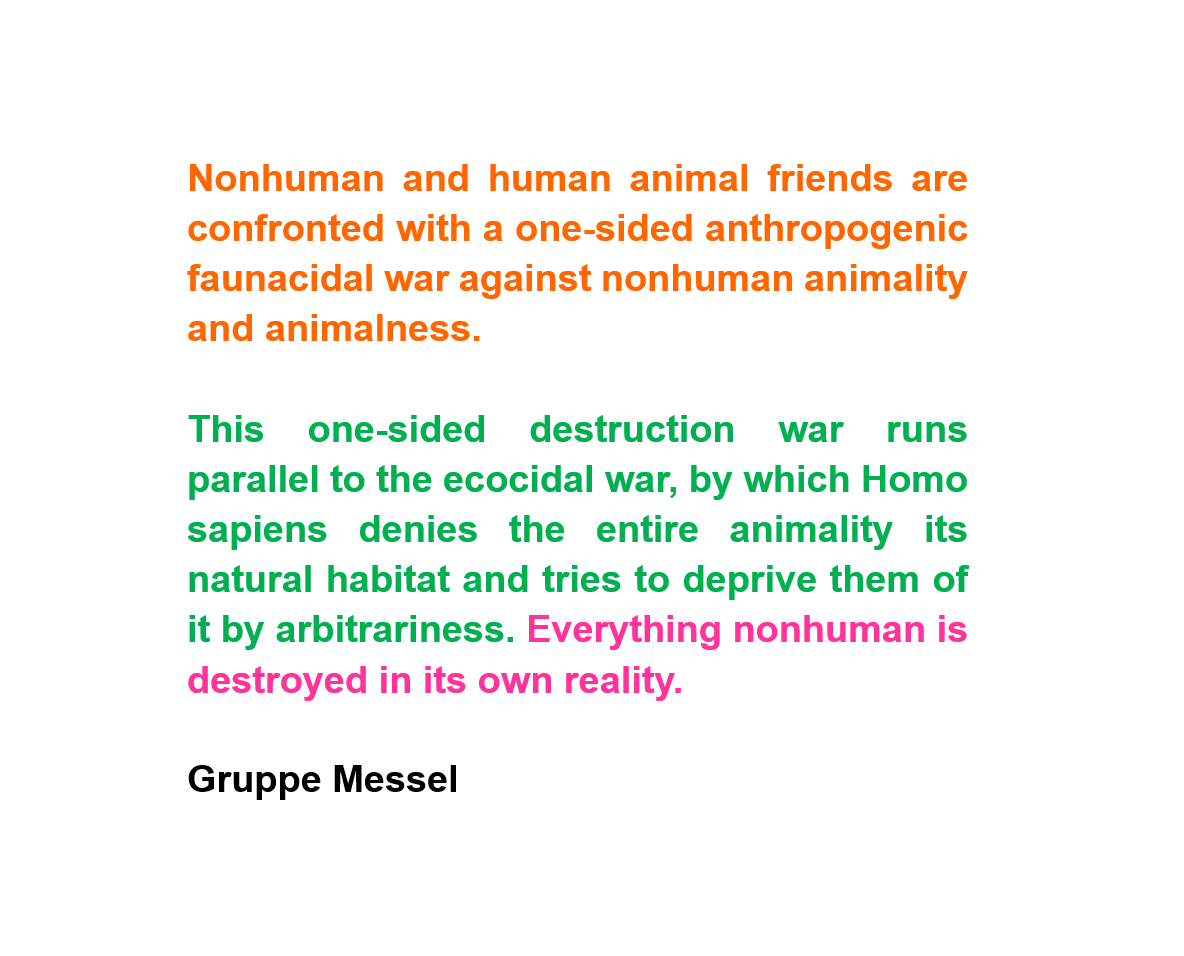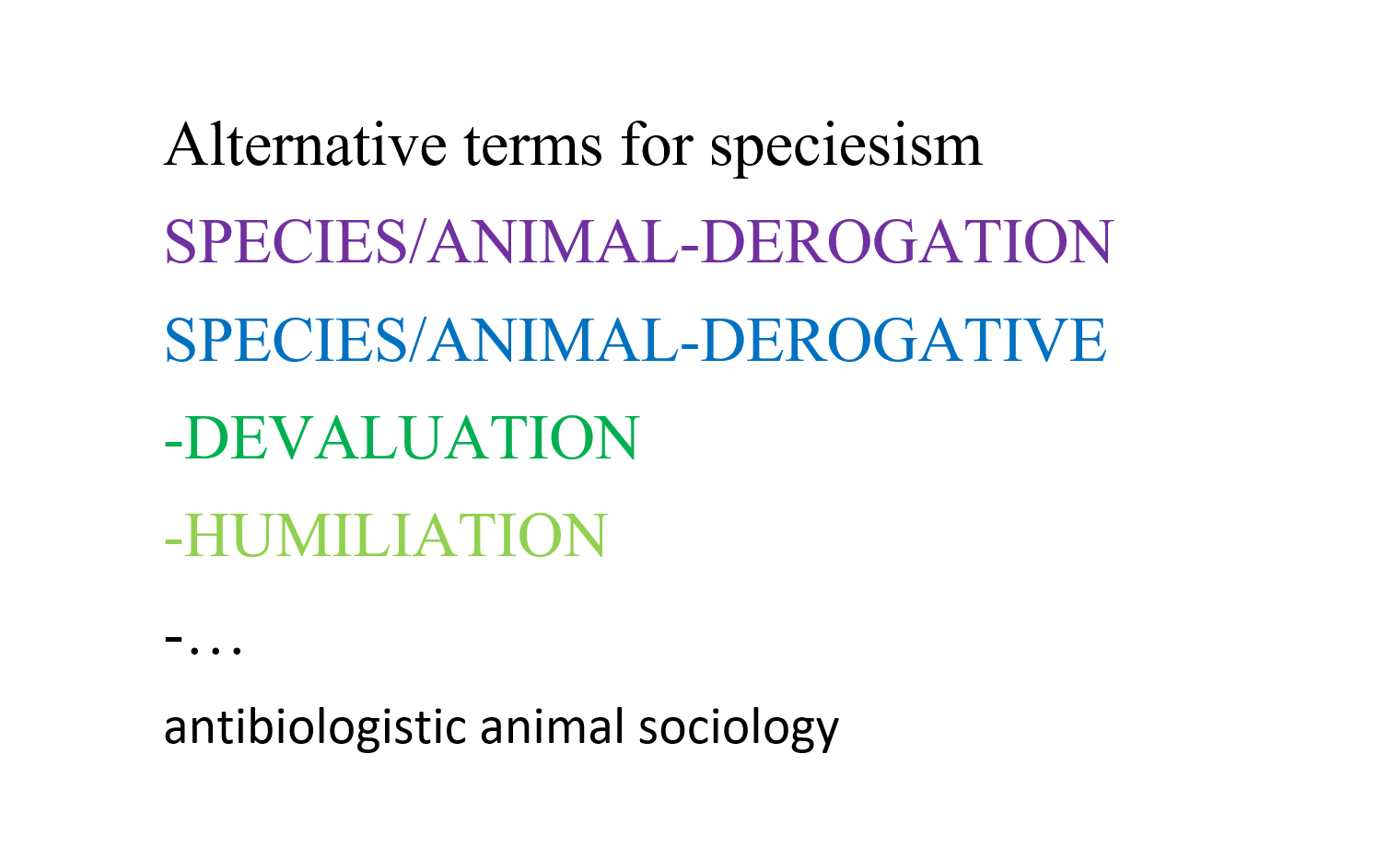Fragment
Decolonialism does not explain forms on nonhuman objectification and human “ruling via definition” in regards to “(nonhuman) animality” (which in itself is yet a term to be argued about and to be analyzed).
Decolonialism is one thing, Animal Objectification has its own histories, even when problematics converge and overlap e.g. in terms of ecological, eco-social contextualities. Brining decolonialism in as the solution for forms of animal objectification puts all hope on intra-human cultural diversity and ignores the dilemma of human definition of animal identity, which is simply not considered to be a historical major mistake seen in itself.
Decolonialism applies to intra-human constellations while the schism between “animal” and “human”, as some form of great hierarchically applied identities, stands outside of intra-human conflicts.
The notion of “human“ and the notion of “animal” differs with individuals, differs in different times and in different cultures. Bringing us all together under the assumption of functionability can’t solve the source of conflict between the predominant varied human notions of “human” and varied human notions of “nonhuman and animal” which resulted in today’s settings that we persistently have with animal objectifications.
Also, the problem with decolonialism to be applied as a tool to dismantle animal objectification raises the question of why the histories of animal objectification can’t be addressed with their own complicated specifics.
Antibiologistic Animal Sociology











